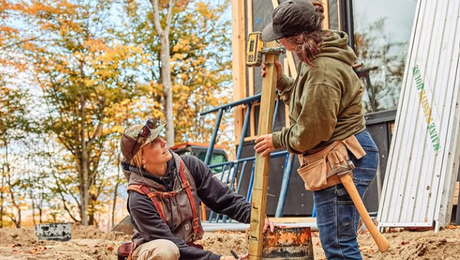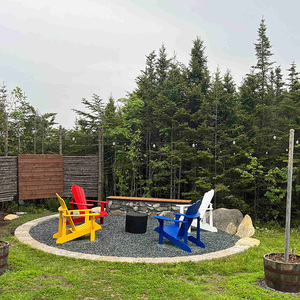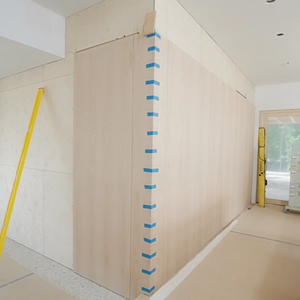
Professional project managers study project planning in depth and have created a set of definitions and methods to run projects smoothly. Project management is a field builders would do well to study–as this is what we do: manage projects. But most builders simply execute a project sequence by memory, first come utilities and the foundations, don’t forget the Ufer ground, and then the framing. This set of steps represent the most rudimentary element of project management, what the professionals call the “critical path,” the steps that must follow one another in order. There’s more to project management than the critical path, much more. We will explore basic project management concepts in the next few blogs.
We’ll start with the Three Constraints: scope, schedule, and cost.
I like to add two more, quality and risk.
Scope Constraint
We all know what a “scope of work” is. We begin defining this “scope constraint” durring our very first meeting with the most important “stakeholder” in any job, the owner. Research with stakeholders — which includes all those engaged in the project, you, the owner, subs — to identify all the project requirements becomes the first and most important step in creating a scope of work. It’s important, not only because the “scope” identifies what has to get built, it’s important because during this first phase of your project management effort you built rapport between your project stakeholders, and explore minute details that reveal expectations, fears, and what ultimately the stakeholders consider success.
Knowing your client’s expectations and helping them to define the eventual “scope of work” in detail will assure you and your team tempers extravegant expectations while responding to the client to achive satisfaction. One builder that does this especially well is Dallas remodeler Chad Hatfield, and he ascribes his success to the disciplined method he uses to identify client expectations and clearly define the scope constraint. You can read about Chad’s method in this blog, “Self-Taught MBA: Filters for a Perfect Fit.”
In case you believe it takes too long to fully develop this first step in the project management process, then consider how much time and money you’ve lost dealing with unhappy clients, clearing up misunderstandings.
Schedule Constraint
The very definition of a project is a process with a clear beginning, duration and end. We have discussed scheduling in several blogs, and reviewed popular scheduling programs. But scheduling tools, even the best will never overcome inaccurate information. Garbage in, garbage out. To develop a realistic schedule, you have to have done step one, defining the scope constraint, as thoroughly as possible.
A simple example, if you tell your customer the kitchen remodel will get done in 30 days, but have not defined what cabinets the client wants, and then tear up the kitchen while your client pays a visit to cabinet shop, only to discover the cabinets she’s chosen will require six week’s lead time… well, you know what happens!
So, to set a realistic schedule you must first develp a well-defined and fully detailed scope of work. You must also define what the “beginning” means. I suggest having two schedules, an internal schedule for the building team stake holders, which starts at the planning stage, and then a separate client schedule that defines the “beginning,” or start date, as the day construction commences.
The duration of the project follows the natural critical path, or sequential steps that cannot proceed until the prior step is completed. If you did your planning right, and the cabinets take six weeks lead time, you start work just about when the cabinets arrive, and then can you actually finish the kitchen remodel in 30 days with a happy customer.
Defining the end of a project is a little more difficult. You can define it as the date you pass the municipal final inspection and hand your client a final bill. You can define it when the punch list is done, and your internal close-out processes have been completed. Or you can define it, as I do, once the year warranty period is over. It’s only at this point that you can allocate any callback costs to your job and have a true and clear understanding of your project’s profitability.
Cost Constraint
All dreams that come true are constrained by a budget. If you have completed step one and two of the project management process, socpe and schedual constraints, and spent enough time to develop rapport and in-depth knowledge of your client’s values and expectations, you can help your client develop a budget that accurately balances their means with their dreams.
For example, my wife wanted a working kitchen. Her husband, could not afford a luxury kitchen. So we developed a plan that included lots of counter space, a scratch-and-dent set of semi-professional appliances, and two refrigerators instead of an expensive Sub-Zero, granite counters, and European cabinets. In the end, she had the kitchen she wanted and I could afford. I had an advantage, I knew the principal stakeholder very, very well.
Time is also money. You already know–at least intuitively if you don’t have good accounting–that projects that run smoothly and quickly turn out profitably. When you develop your schedule accurately, you essentially build the project conceptually before doing any construction at all. You understand the process and this allows you to create an accurate budget. This budget will likely cause you to revisit the scope with your client, and make adjustments. Ultimately, defining the cost constraint accurately avoids the biggest problem area between contractors and customers, and this is change orders and overruns.
And this is why cost comes third, rather than first in the project management trilogy. It’s usually the opposite of what happens in real life, where customers call and the first question they ask is, “How much does a kitchen remodel cost?”
Quality and Risk Constraints
Although professional project managers speak about the triple constraint, scope, schedule and cost, I also consider quality and risk as important constraints to define and consider.
As a homebuilder and remodeler, you likely live in the same geographic area where your live, and sometimes run into your clients at the supermarket. The risks you run include the risk of losing money, and the risk of losing your good reputation, which ultimately affects your pocketbook, too. Quality in materials and construction work is the most important hedge you have against loosing money.
I keep track of the full impact of every callback, I account for the money lost to underperforming materials and specific tradesmen. So that instead of closing my eyes and clenching my teeth when things go wrong, I open my eyes, take on the problem account for multiple costs of poor quality–hopefully learning something in the process to avoid in the future.
Does this mean I only buy the best of everything? No. I have spent an entire career building affordable housing, so I am very familiar with the concept of cutting costs. I’ve written two books about it, and consider myself an expert. Ultimately, I have learned to understand my tolerance for risk when balancing the scope and cost constraints of a project.
I can tolerate the risk of replacing a generic light fixture or faucet, but I cannot tolerate the risk of ripping apart walls to fix a shower valve. So, when I develop a scope of work, I specify high quality, name brand shower valves, and have no aversion to buy the discounted light fixtures and lavatory faucets on sale at the home improvement center. I can risk replacing a $20 faucet, I cannot risk spending $1500 to replace a faulty shower valve buried behind a wall of tile.
When I found windows where one of the costliest items in callbacks, I stopped buying the cheapest windows and opted for better brands and spent time and money training a “window team” to install them.
On the other hand, I have built hundreds of homes using money-saving methods like advanced-framing techniques and frost protected shallow foundations without a single callback. So, you can be cheap, if you understand your risk tolerance, or constraint, whether $20 or $1500, and apply the high quality insurance model, not as a slogan or a budget-busting mindset, but strategically as an indispensable project constraint.
Fine Homebuilding Recommended Products
Fine Homebuilding receives a commission for items purchased through links on this site, including Amazon Associates and other affiliate advertising programs.
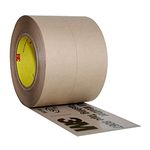
8067 All-Weather Flashing Tape
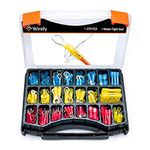
Reliable Crimp Connectors

Handy Heat Gun

